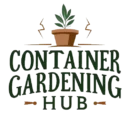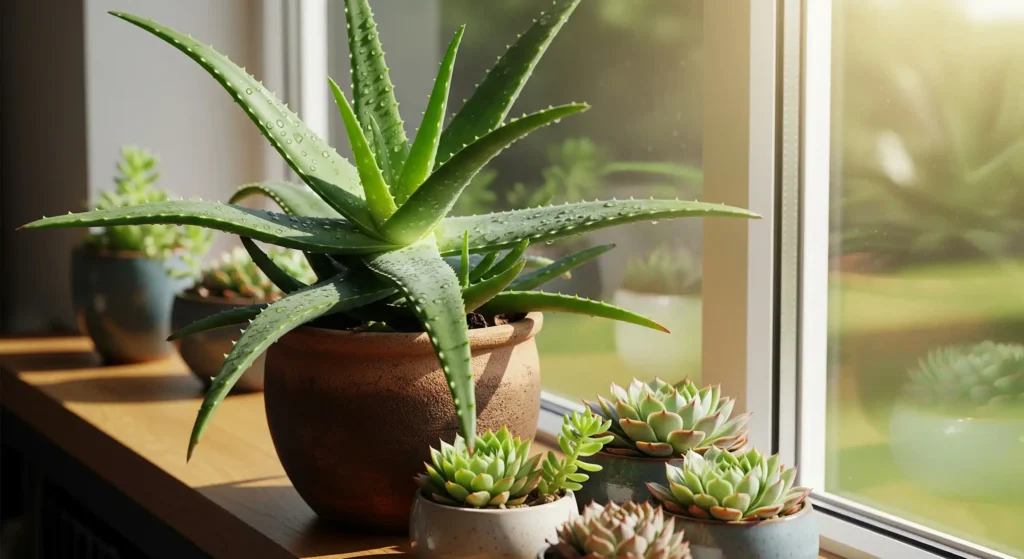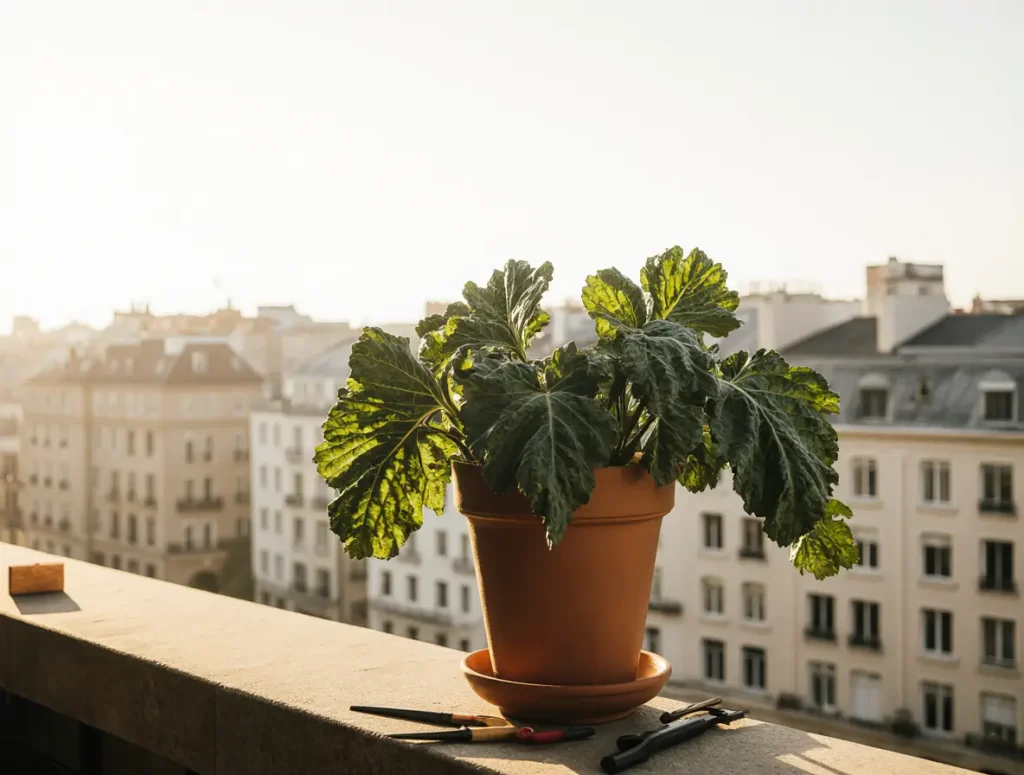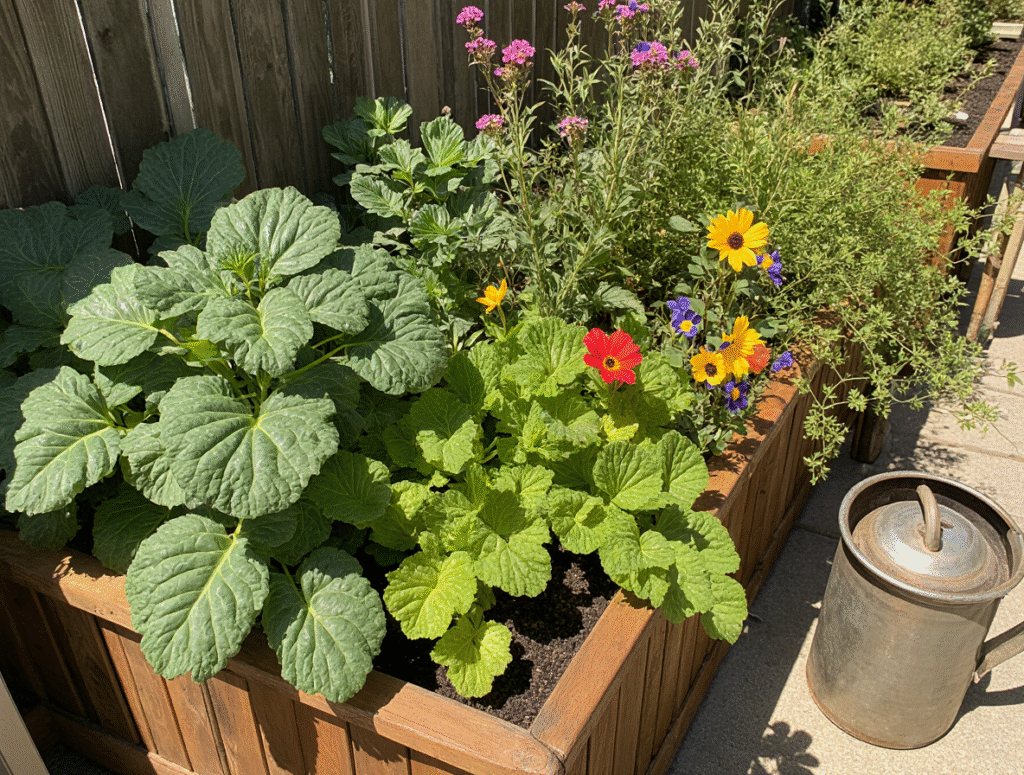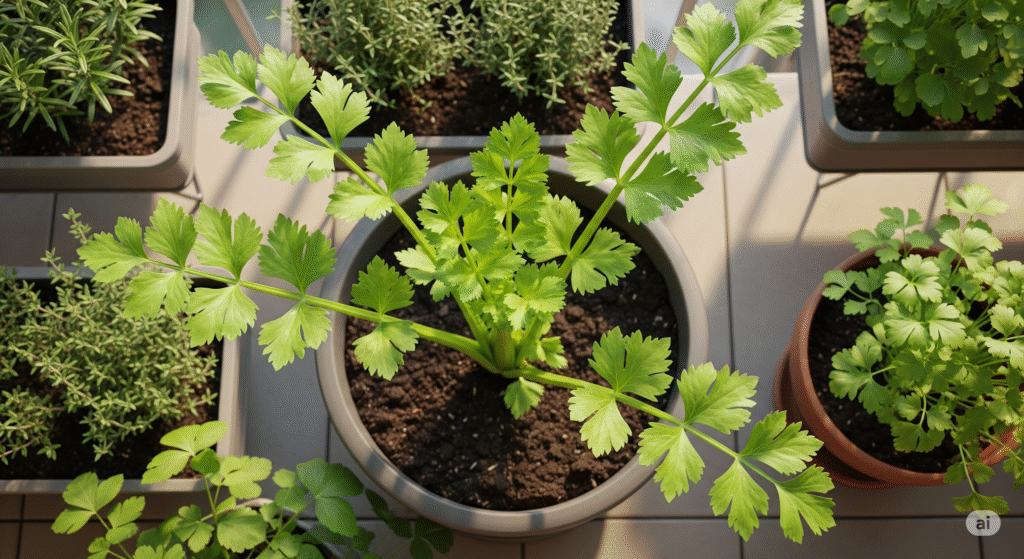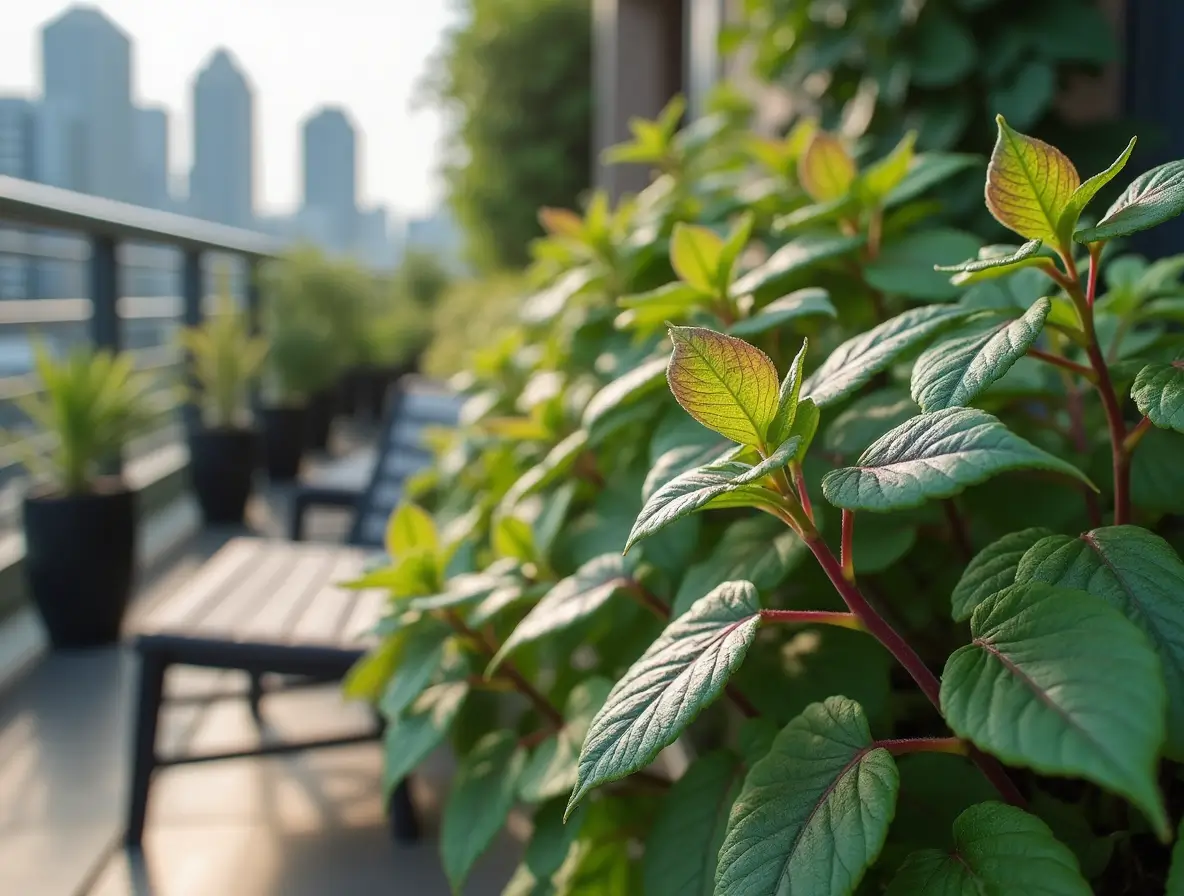
Grow Perilla Leaf: A Simple and Rewarding Step-by-Step Guide from Seed to Table
Imagine stepping into your kitchen and snipping a handful of vibrant green Perilla leaves from your very own plant. These aren’t just any leaves; they’re Perilla leaves, perfect for culinary uses, offering a unique blend of flavor. In this guide, you’ll learn how to grow Perilla leaf at home with the best Perilla planting tips, from seed to harvest. Whether you’re looking to enhance your dishes or enjoy fresh, flavorful leaves year-round, growing Perilla leaf at home is a rewarding and satisfying experience that brings both flavor and beauty to your garden.
Understanding Perilla Leaf Varieties
Before embarking on your Perilla growing journey, it’s essential to familiarize yourself with the diverse world of Perilla varieties.
- Green Perilla: This is the most common variety, characterized by its vibrant green leaves and a slightly minty, citrusy flavor. It’s widely used in Asian cuisine.
- Purple Perilla: As the name suggests, this variety boasts stunning purple leaves with a slightly pungent, almost peppery flavor.
- Sesame Leaf: This variety, also known as “Egoma,” has a nutty flavor and is prized for its high omega-3 fatty acid content.
Each variety offers unique culinary and medicinal properties, allowing you to choose the one that best suits your needs and preferences.
Perilla Leaf Planting Guide: A Step-by-Step Approach
- Selecting the Right Location:
Perilla thrives in warm climates with plenty of sunshine.
- Sunlight: Choose a location that receives at least 6-8 hours of direct sunlight per day. While partial shade is tolerated, it may result in reduced leaf production and less vibrant colors.
- Soil: Perilla prefers well-drained, fertile soil. Amend your soil with compost or other organic matter to improve its structure and nutrient content.
- Space Considerations: Allow ample space for your Perilla plants to grow. Depending on the variety and your growing method, provide at least 12-18 inches between plants.
- Starting Seeds:
- Direct Sowing: You can directly sow Perilla seeds outdoors after the last frost has passed. Sow seeds about ¼ inch deep into the prepared soil.
- Starting Indoors: For an earlier harvest, start seeds indoors 4-6 weeks before the last expected frost. Use seed trays or small pots filled with a well-draining seed-starting mix. Keep the soil consistently moist and maintain a warm temperature (around 70-75°F) for optimal germination.
- Transplanting Seedlings (if applicable):
- Hardening Off: Gradually acclimate seedlings to outdoor conditions by placing them outdoors for short periods each day, increasing the duration gradually over a week.
- Transplanting: Once seedlings have developed a few true leaves, transplant them into your garden or containers. Gently handle the seedlings to avoid damaging the roots.
- Spacing: Space seedlings according to the variety and your growing method.
Perilla Plant Care: Essential Tips
Providing consistent care is crucial for healthy Perilla growth.
- Watering: Water your Perilla plants regularly, especially during hot, dry periods. However, avoid overwatering, as this can lead to root rot. Check the soil moisture regularly and water deeply when the top inch of soil feels dry. Mulching around the base of the plants can help retain moisture and suppress weeds.
- Fertilizing: Fertilize your Perilla plants every 2-3 weeks with a balanced liquid fertilizer. You can also use organic fertilizers like compost tea or fish emulsion.
- Pest and Disease Control:
- Aphids: These tiny insects can infest Perilla plants. Use insecticidal soap or introduce beneficial insects like ladybugs to control them.
- Spider mites: These microscopic pests can cause leaves to turn yellow and drop. Use a strong jet of water to dislodge them.
- Powdery mildew: This fungal disease can appear as a white, powdery coating on leaves. Improve air circulation and use a fungicide if necessary.
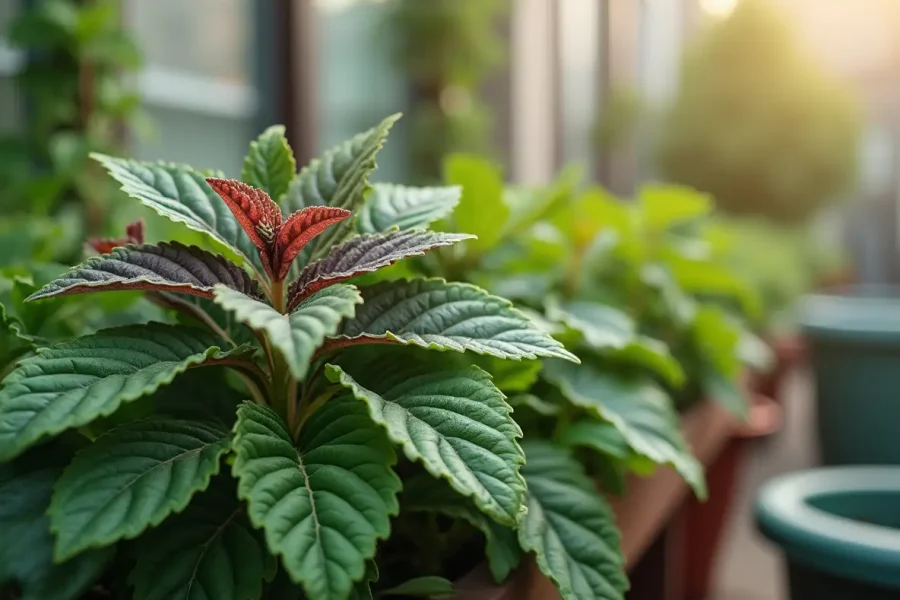
Perilla Leaf Cultivation Techniques
To optimize your Perilla harvest and maintain healthy plant growth, consider these cultivation techniques:
- Pruning and Training: Pinch back the tips of young plants to encourage bushier growth and prevent them from becoming leggy. You can also prune to maintain a desired shape and size.
- Supporting Tall Varieties: Some Perilla varieties can grow quite tall. Use stakes or cages to support them and prevent them from falling over.
- Controlling Growth: If your Perilla plants are growing too vigorously, you can control their growth by lightly pruning or root pruning.
Growing Perilla Leaf at Home: Practical Tips
- Container Gardening:
- Choose well-draining containers with adequate drainage holes.
- Use a high-quality potting mix that is well-aerated and rich in organic matter.
- Water regularly, ensuring that excess water drains freely.
- Companion Planting:
- Perilla can be a beneficial companion plant for various crops.
- Plant it near vegetables that attract pests, as Perilla can repel some insects.
Why Growing Perilla Leaf at Home is Easy and Rewarding
Growing Perilla leaf at home is easier than you might think, and it’s a fantastic way to add fresh, flavorful leaves to your kitchen. By following the best Perilla planting tips, you can cultivate a thriving Perilla plant that’s perfect for culinary uses. Whether you want to enhance your dishes with fresh Perilla leaves or enjoy their many health benefits, knowing how to grow Perilla leaves from seed to harvest ensures a bountiful and satisfying gardening experience. This versatile plant is ideal for both beginner and experienced gardeners, offering a rewarding and flavorful addition to your home garden.
Perilla Leaf Harvesting and Storage
- Harvesting Techniques:
- Harvest leaves when they are young and tender for the best flavor.
- Use clean scissors or shears to cut the leaves from the plant.
- Harvest in the morning after the dew has dried.
- Storage Methods:
- Fresh Storage: Store harvested leaves in the refrigerator in an airtight container for up to a week.
- Drying: Air dry leaves in a well-ventilated area away from direct sunlight. Alternatively, use a food dehydrator.
- Freezing: Wash and dry leaves thoroughly. Place them in airtight bags and freeze for up to 6 months.
Perilla Leaf: Culinary Uses
Perilla leaf is a culinary treasure trove, adding a unique flavor and aroma to various dishes.
- Culinary Applications:
- Asian Cuisine: Perilla leaves are widely used in Korean, Japanese, and Chinese cuisines. They are often used as a flavorful garnish, added to salads, wrapped around rice or grilled meats, and used in soups and stews.
- Western Cuisine: Experiment with using Perilla leaves in pesto, stir-fries, marinades, and as a garnish for grilled fish or chicken.
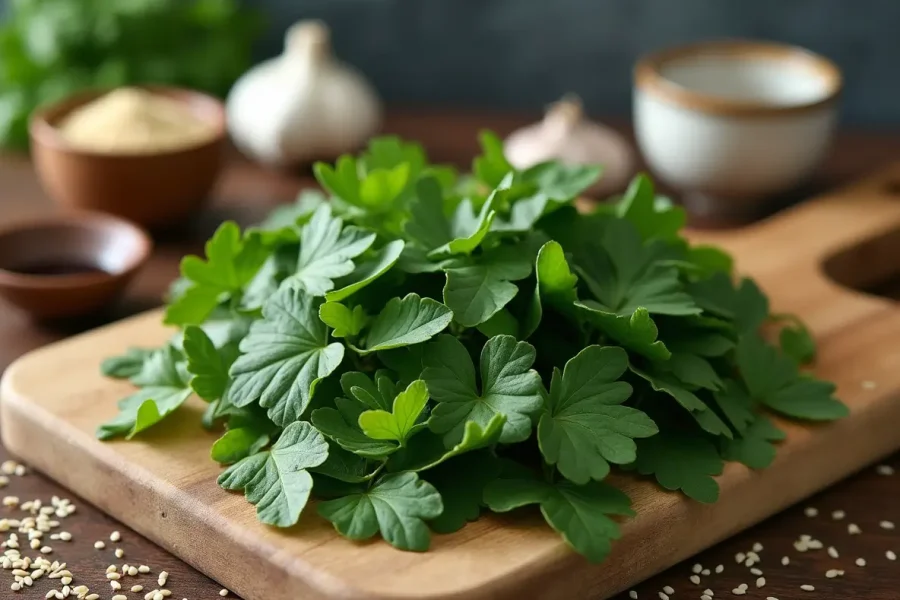
Troubleshooting Common Problems
Even the most experienced gardeners may encounter challenges when growing Perilla. Here are some common problems and how to address them:
- Yellowing Leaves:
- Overwatering: Ensure proper drainage and avoid overwatering.
- Underwatering: Water your plants deeply when the top inch of soil feels dry.
- Nutrient deficiencies: Fertilize your plants regularly with a balanced fertilizer.
- Pests and Diseases: Monitor your plants regularly for signs of pests and diseases. Take prompt action to control infestations and prevent the spread of disease.
Perilla Leaf Growing Techniques
- Organic Perilla Leaf Cultivation: Grow Perilla organically by using organic fertilizers and pest control methods. Avoid using synthetic pesticides and herbicides.
- Hydroponic Perilla Cultivation: Explore hydroponic methods for growing Perilla indoors or in controlled environments.
- Growing Perilla in Different Climates: Adjust your growing techniques based on your specific climate. For example, provide additional shade in hot climates and protect plants from frost in colder regions.
FAQs
Q: Can I grow Perilla leaf indoors? A: Yes, you can grow Perilla indoors with adequate sunlight or grow lights. However, it may not reach its full potential indoors compared to outdoor growing conditions.
Q: How do I know if my Perilla plant is getting enough sunlight? A: Signs of insufficient sunlight include pale leaves, leggy growth, and reduced leaf production. If you notice these signs, move your plants to a sunnier location.
Q: Can I eat all parts of the Perilla plant? A: While the leaves are primarily consumed, the seeds can also be used for oil extraction and culinary purposes. Perilla seed oil is rich in omega-3 fatty acids and has various health benefits.
Q: When is the best time to harvest Perilla leaves? A: Harvest leaves when they are young and tender for the best flavor. You can harvest leaves continuously throughout the growing season.
Conclusion
Growing Perilla leaf at home is a rewarding experience that allows you to enjoy the unique flavor and health benefits of this versatile plant. By following the tips and techniques outlined in this guide, you can cultivate a thriving Perilla plant and reap the rewards of your efforts. Whether you use it to enhance your culinary creations or explore its medicinal properties, growing Perilla leaf is a rewarding endeavor for any home gardener.
You Might Like
